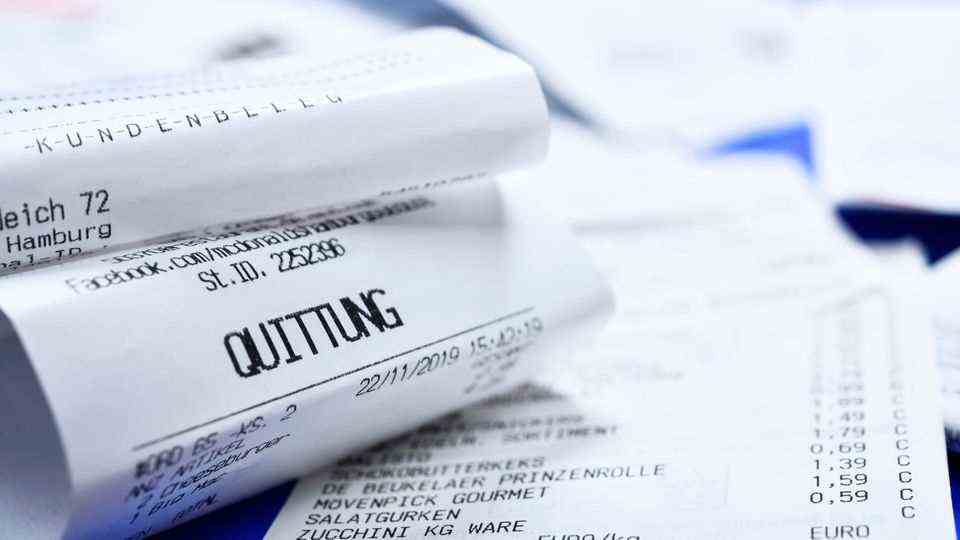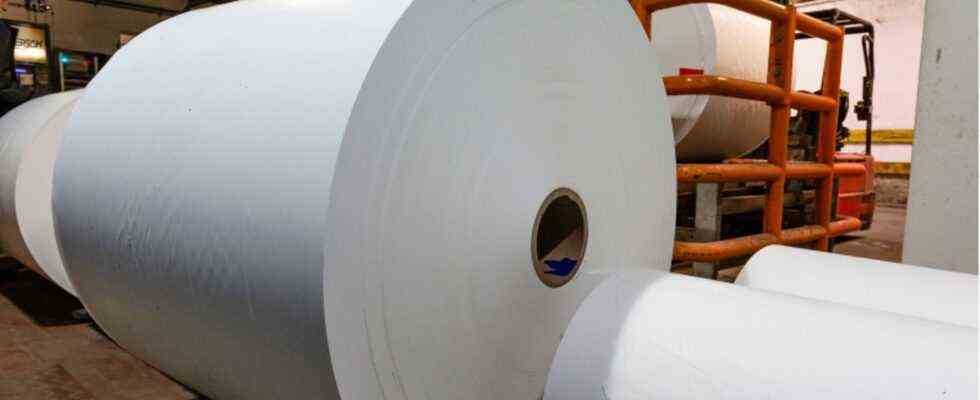Lack of paper
Book trade and manufacturers are sounding the alarm: Why paper is currently becoming more and more expensive
Book trade and printers, dealers and manufacturers of paper, they all sound the alarm: there is a shortage of paper (symbolic image)
© Frank Molter / DPA
The tide on the paper market is ebbing, and printing companies and publishers are feeling this painfully. The problems do not only stem from the corona crisis – the booming online trade is also one reason.
From Marina Zapf
Will the e-book voucher replace the Christmas book present this year? The e-paper the glossy magazine? Are advertising mailings now being completely replaced electronically? Bookstores and printers, dealers and manufacturers of paper, they all sound the alarm: There is a shortage of paper – albeit not a dramatic one. However, the prices have already risen astronomically in some cases. Anyone who is used to a predictable market in terms of costs, delivery times and flexibility has to adapt.
The reasons for this are diverse. The supply chains for raw materials may not be as branched out internationally as those for auto parts. But they too were mixed up by the corona pandemic and economies that were restarting at different speeds. Some paper companies had switched to cardboard boxes and are now unable to keep up with production. Declining collection rates for waste paper from trade and industry are causing print shops to get into trouble due to insufficient quantities and price pressure. Delivery dates cannot be kept.
In the book trade, however, no fewer titles should be on the shelves for this reason. But it is possible that one or the other bestseller cannot be reprinted as quickly as usual. Even with normal paper, bottlenecks mean delivery times of up to four months. The reprint management is becoming riskier with waiting times of up to seven months, according to the German book trade association, deadline pressures are almost impossible. Publishing groups that work with standardized products and long-term framework agreements are less affected by the lack of supplies than with orders for short-term special formats.
Buyers from publishers complain primarily about the struggle for delivery quantities and the prices of paper and cardboard used for book covers and brochure covers. But the proportion of graphic paper from which books, magazines and newspapers are made has also been declining for years. The increased use for packaging paper and cardboard has intensified the upswing in online trading during the corona crisis – as has, incidentally, the pharmaceutical industry’s need for packaging material.
Germany: Europe’s paper mill
The domestic paper industry produces only a small amount for book printing. But otherwise Germany is Europe’s paper mill. Most of the raw material required also comes from Europe. Despite the increased recycling rate, Germany is a net importer of recovered paper and purchases mainly in Benelux and France. The manufacturers’ association confirms delivery bottlenecks, especially in the case of old goods for graphic paper. Waste paper currently costs around 200 euros per ton, and more than ever; it has risen by 75 percent since the beginning of the year. In the Corona year 2020, there was far less waste paper – and far less graphic paper was also produced.
After the packaging materials – also extensive for the logistics of the export nation Germany – graphic papers are the most important paper segment in terms of volume. In addition to newspapers and magazines, this also includes writing or copier paper. Incidentally, if you buy 500 sheets of recycled quality, you will save 5.5 kg of wood, according to the Federal Environment Agency.
Because after the lockdown there is more advertising in print media, daily newspapers, advertising papers and brochures need more paper. The capacities of the manufacturers – for 15 years in a steady decline – are not very flexible. Numerous producers across Europe have ceased operations or switched to raw material for corrugated cardboard – the best seller in the booming online business. Since 2016, capacities of 8.2 million tons have been reduced in the course of structural change. The Swedish paper giant Stora Enso alone took over a million tonnes of wood-free paper from the market in Finland in 2020 and wants to convert other factories to packaging cardboard.

China is sapping the pulp market
With corona-related production declines of around 60 percent, this was not so noticeable in 2020, explains wholesaler Ralph Kirchbeck from the IGEPA Group. Today, however, already. Everywhere in the value chain it gets stuck and stuck. This is also the case with pulp, for which Scandinavia and Latin America (especially Brazil and Uruguay) are world market leaders, depending on their properties.
One hundred tons of paper in this country in 2020 consisted of 79 percent waste paper, the rest is cellulose or wood. Here, China is currently covering its increased domestic needs and sucking off the world market, says the spokesman for the paper industry association. It just pays higher prices. In addition, the largest growth market prefers fresh fibers over waste paper.
While manufacturers consider printing paper shortages to be a “temporary problem”, the printing industry is upset. In numerous printing and media companies, the bottlenecks in the paper markets caused “alarming production conditions”, complains their association BVDM. On the one hand, these are uncertainties about delivery quantities and dates, explains spokeswoman Bettina Knape. Publishers cannot print volumes as they would like. On the other hand, many printing companies were left with the skyrocketing waste paper prices.
Time-critical print jobs, such as the weekly advertising brochures from discounters, are particularly difficult, emphasizes Knape. If they don’t land in the mailboxes on time, the retail trade could lose up to 30 percent. In the worst case, this will be passed on to the supplying printing companies in the form of penalties.
No one expects a quick relaxation in the market, but the paper industry is worried against the background of growing demand, rising prices for energy and raw materials as well as supply bottlenecks for raw and auxiliary materials. The scarcity of raw materials is also fueled by the global problems in sea traffic and the associated shortage of containers, including the massive increase in freight rates. For print shops and publishers this means that their purchasing and production costs will continue to rise. They will inevitably have to pass this on to the customers.

